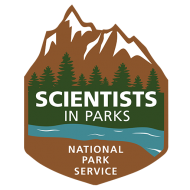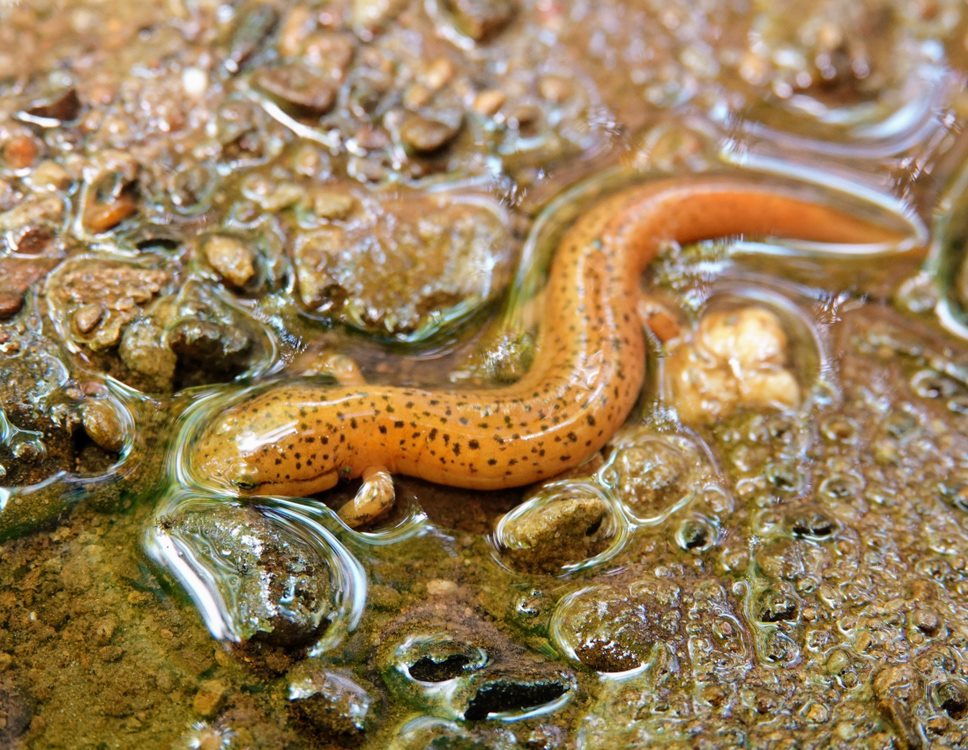Alex Ramirez Landaverde
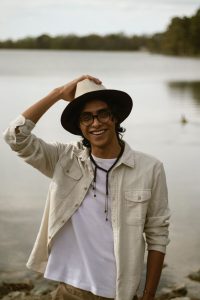 Hello! My name is Alex Ramírez Landaverde. I am currently pursuing a degree in biological Sciences/Environmental sciences with a minor in Psychology at Arkansas State University.
Hello! My name is Alex Ramírez Landaverde. I am currently pursuing a degree in biological Sciences/Environmental sciences with a minor in Psychology at Arkansas State University.
I was born in the city of Jalpan de Serra Queretaro, one of the most important biosphere reserves of Mexico. Being born and having spent the first decade of my life in a natural reserve exposed me to the beauty of nature and conservation since a very young age. I have memories of spending the day swimming with my friends in unpolluted waters, of taking a hike with my grandma to enjoy the sound of the birds, and many more moments that marked my love for the natural world. I am often times asked if I even like my career. With certainty I can look back at my memories, my mornings, my days, and I can remember those feelings I feel when I experience nature, and without doubt I can answer such questions; yes I love my carrier, yes I love nature, and yes I will dedicate my entire self so that many more generations to come can experience those beautiful encounters with Mother Earth just as I do.
Allyson Marrs
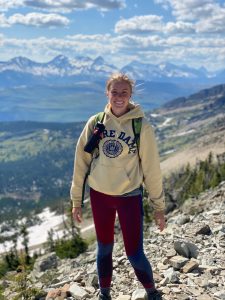 Hello! I am a Master’s student at Utah State University studying stream ecology and biogeochemistry. My thesis project focuses on identifying drivers of greenhouse gas emissions from natural and man-made streams. This summer, I will be working in Bozeman, Montana with the Greater Yellowstone Inventory and Monitoring Network (GRYN) as an SIP Fellow. The GRYN monitors natural resources in Yellowstone, the Grand Tetons, Bighorn Canyon National Recreation Area, and John D. Rockefeller, Jr. Memorial Parkway. I will be analyzing long-term monitoring data to inform park managers about important water quality trends at one of these locations. I am very excited to use my aquatic ecology skills to help mitigate natural resource issues facing our public lands. I spend most of my free time outdoors, and I have enjoyed exploring Utah through skiing, trail running, and camping across the state. I am looking forward to exploring more of the beautiful landscapes of the American West in Montana this summer!
Hello! I am a Master’s student at Utah State University studying stream ecology and biogeochemistry. My thesis project focuses on identifying drivers of greenhouse gas emissions from natural and man-made streams. This summer, I will be working in Bozeman, Montana with the Greater Yellowstone Inventory and Monitoring Network (GRYN) as an SIP Fellow. The GRYN monitors natural resources in Yellowstone, the Grand Tetons, Bighorn Canyon National Recreation Area, and John D. Rockefeller, Jr. Memorial Parkway. I will be analyzing long-term monitoring data to inform park managers about important water quality trends at one of these locations. I am very excited to use my aquatic ecology skills to help mitigate natural resource issues facing our public lands. I spend most of my free time outdoors, and I have enjoyed exploring Utah through skiing, trail running, and camping across the state. I am looking forward to exploring more of the beautiful landscapes of the American West in Montana this summer!
Benjamin Harper
Natural Resource Program Center-Denver
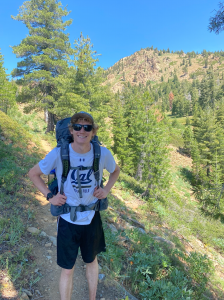 Hi everyone! My name is Ben Harper and I am currently a master’s student in the Climate and Society program at Columbia University. I am passionate about creating equitable climate policy and using climate information to build resiliency in communities and ecosystems. I have a background in water management and salmon conservation in rural Northern California, and I have also worked with the city of Oakland, California on its Equitable Climate Action Plan. This summer I will be working with the Denver Service Planning Center to integrate climate change into parks planning processes, helping to assess vulnerabilities to climate impacts in parks and implement management strategies. I am also interested in climate justice, and I will be helping to integrate justice, equity, diversity, and inclusion into parks planning frameworks. The climate crisis presents us with enormous challenges to rethink how we manage human systems and natural resources, and I am excited to bring my background in climate science and policy to the National Parks Service and learn how we can better anticipate these changes in our planning strategies.
Hi everyone! My name is Ben Harper and I am currently a master’s student in the Climate and Society program at Columbia University. I am passionate about creating equitable climate policy and using climate information to build resiliency in communities and ecosystems. I have a background in water management and salmon conservation in rural Northern California, and I have also worked with the city of Oakland, California on its Equitable Climate Action Plan. This summer I will be working with the Denver Service Planning Center to integrate climate change into parks planning processes, helping to assess vulnerabilities to climate impacts in parks and implement management strategies. I am also interested in climate justice, and I will be helping to integrate justice, equity, diversity, and inclusion into parks planning frameworks. The climate crisis presents us with enormous challenges to rethink how we manage human systems and natural resources, and I am excited to bring my background in climate science and policy to the National Parks Service and learn how we can better anticipate these changes in our planning strategies.
Brenton Wilder
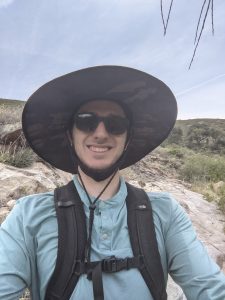 Hello! I’m a PhD student in the Department of Geosciences at Boise State University where I focus on quantifying changes to seasonal snowpack due to anthropogenic global warming and disturbances such as severe, high elevation wildfires in forested ecosystems. In my research I use a combination of airborne/helicopter lidar, physics-based modeling, and field spectroscopy to answer research questions relevant for downstream communities and ecosystems. As a Scientist in Parks Fellow at the Cabrillo National Monument, I will be focusing on a totally different form of precipitation – fog! Nestled at the end of the Point Loma peninsula in San Diego, the park is home to several endemic, drought deciduous plant species that when blooming, make for an absolutely beautiful view. Researchers at the park are interested in installing weather cameras, meteorological stations, and leaf wetness sensors to get a better idea of the role fog plays in plant phenology, especially during the warm spring and summer months when rainfall is sparse. This research will help in promoting climate resilience at the park by potentially identifying microrefugia at the park that could be conducive for future native revegetation efforts.
Hello! I’m a PhD student in the Department of Geosciences at Boise State University where I focus on quantifying changes to seasonal snowpack due to anthropogenic global warming and disturbances such as severe, high elevation wildfires in forested ecosystems. In my research I use a combination of airborne/helicopter lidar, physics-based modeling, and field spectroscopy to answer research questions relevant for downstream communities and ecosystems. As a Scientist in Parks Fellow at the Cabrillo National Monument, I will be focusing on a totally different form of precipitation – fog! Nestled at the end of the Point Loma peninsula in San Diego, the park is home to several endemic, drought deciduous plant species that when blooming, make for an absolutely beautiful view. Researchers at the park are interested in installing weather cameras, meteorological stations, and leaf wetness sensors to get a better idea of the role fog plays in plant phenology, especially during the warm spring and summer months when rainfall is sparse. This research will help in promoting climate resilience at the park by potentially identifying microrefugia at the park that could be conducive for future native revegetation efforts.
Chris Poling
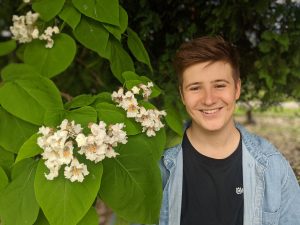 Hello! I am a Masters student at Kent State University majoring in Environmental Biology. My main career focus is botany and native plant conservation. In my free time I love scouring state and national forests for state listed plant species and tending to my native plant gardens back home. I’m basically a massive professional plant nerd!
Hello! I am a Masters student at Kent State University majoring in Environmental Biology. My main career focus is botany and native plant conservation. In my free time I love scouring state and national forests for state listed plant species and tending to my native plant gardens back home. I’m basically a massive professional plant nerd!
Having grown up less than fifteen minutes from the Cuyahoga Valley National Park (CVNP), my early life was full of wonderment and curiosity about the natural world. I consider CVNP to be the very place which fostered my love of nature. I can remember being as young as 5 years old, riding in my parents’ bike trailer down the towpath trail along the Park’s historic canal system. Fast forward 19 years later, and I am honored to get the opportunity to survey wetlands along that very canal system. During my surveys of the canals I will be collecting data on various ecological aspects of the wetlands that occur along it, such as their borders, hydrological influences, habitat type and of course my favorite thing, plants.
Elizabeth Rush
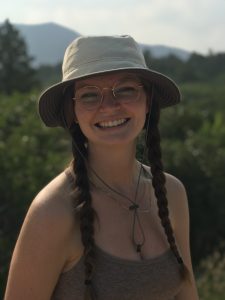 In 2020, I completed my bachelor’s degree in Environmental Science with a focus on Environmental Health from George Mason University. I am currently a graduate student studying Conservation Medicine and Planetary Health at George Mason University, where my studies focus on the intersection of human, animal, and environmental health. I am interested in examining the role of biodiversity in disease emergence, but I also have a passion for insect community ecology and pollinator conservation. As a Scientists in Parks Fellow, I will be working with the Yosemite Pollinator Hotshots program helping document pollinator trends in response to climate change. Data from this program will help inform plans to restore native plants upon which pollinators rely. I am excited to learn more about natural resource management in Yosemite and be a part of this effort to conserve and protect pollinators!
In 2020, I completed my bachelor’s degree in Environmental Science with a focus on Environmental Health from George Mason University. I am currently a graduate student studying Conservation Medicine and Planetary Health at George Mason University, where my studies focus on the intersection of human, animal, and environmental health. I am interested in examining the role of biodiversity in disease emergence, but I also have a passion for insect community ecology and pollinator conservation. As a Scientists in Parks Fellow, I will be working with the Yosemite Pollinator Hotshots program helping document pollinator trends in response to climate change. Data from this program will help inform plans to restore native plants upon which pollinators rely. I am excited to learn more about natural resource management in Yosemite and be a part of this effort to conserve and protect pollinators!
Isabel McIntyre
Lyndon B. Johnson National Historic Park
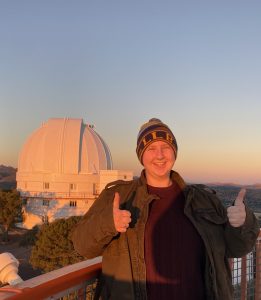 Hello! I am a recent graduate of Mount Holyoke College, where I double majored in Astronomy and Biological Sciences. Throughout my time studying these subjects, I have had opportunities to conduct research ranging from identifying genetic markers associated with root traits in oat plants to studying the hot dust content of distant galaxies! Next fall, I will be attending Arizona State University to pursue my PhD in Astrophysics and continue studying galaxy evolution.
Hello! I am a recent graduate of Mount Holyoke College, where I double majored in Astronomy and Biological Sciences. Throughout my time studying these subjects, I have had opportunities to conduct research ranging from identifying genetic markers associated with root traits in oat plants to studying the hot dust content of distant galaxies! Next fall, I will be attending Arizona State University to pursue my PhD in Astrophysics and continue studying galaxy evolution.
One of the most exciting weeks of my life was going on an observing run at the McDonald Observatory in West Texas, where the sky was darker than I had ever seen before and I could see countless stars and the band of the Milky Way. I am incredibly excited to return to Texas this summer to advocate for dark skies and help create a space where everyone can access an incredible view of the night sky at the Lyndon B. Johnson National Historical Park.
Jalyn Gearries
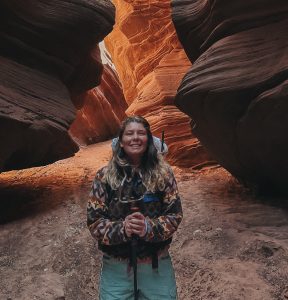 My name is Jalyn Gearries and I am halfway through my MS of Climate Science and Solutions at Northern Arizona University. I am concurrently pursuing two graduate certificates in Greenhouse Gas Accounting and Science Communication. My program is a non-thesis Professional Science Master’s Program (PSM), which allows me to focus a lot of my time on developing a wide array of knowledge on climate and environmental science. I am primarily interested in plant science and land management science, which brought me to apply for the Biology Assistant position at the Grand Canyon National Park. Not only do I have a deep-rooted passion for the park, as it is only about an hour and a half from my home of Flagstaff, AZ, but I am also passionate about the National Park Service itself. My project this summer will be analyzing data collected from a citizen science project regarding phenological changes in GCNP vegetation in response to climate change. With this, I will also be participating in outreach and interpretation about my findings in the park as well as producing publications about the continued research.
My name is Jalyn Gearries and I am halfway through my MS of Climate Science and Solutions at Northern Arizona University. I am concurrently pursuing two graduate certificates in Greenhouse Gas Accounting and Science Communication. My program is a non-thesis Professional Science Master’s Program (PSM), which allows me to focus a lot of my time on developing a wide array of knowledge on climate and environmental science. I am primarily interested in plant science and land management science, which brought me to apply for the Biology Assistant position at the Grand Canyon National Park. Not only do I have a deep-rooted passion for the park, as it is only about an hour and a half from my home of Flagstaff, AZ, but I am also passionate about the National Park Service itself. My project this summer will be analyzing data collected from a citizen science project regarding phenological changes in GCNP vegetation in response to climate change. With this, I will also be participating in outreach and interpretation about my findings in the park as well as producing publications about the continued research.
Laura Hancock
First State National Historical Park
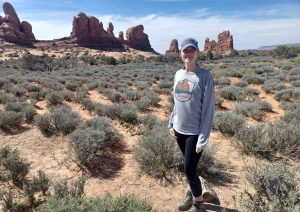
Hello! I am Laura Hancock, a PhD candidate within the Organismic and Evolutionary Biology Program at the University of Massachusetts Amherst (UMass). At UMass, my research focuses on understanding the spatial patterns of wildlife in New England and the western U.S.A. — and understanding what driving processes create the patterns we see. I am especially passionate about the conservation of bats and helping the public to understand the fascinating biology behind these captivating creatures. In my non-research time, I am passionate about undergraduate mentoring, pushing for inclusive higher education policies, and joining the languages & worlds of scientific research and federal policy development.
This summer, I will be working at First State National Historical Park in Delaware where I will be working on invasive species monitoring and data management, in addition to creating outreach materials to engage the public in the ecology within First State National Historical Park. I am thrilled to be getting the opportunity to contribute to the development of a long-term ecological management project, biodiversity monitoring, and community education!
Mackenzie Conant
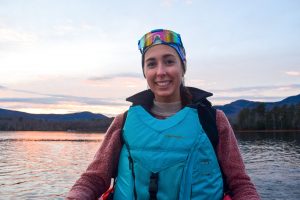 The who, what, when, where, and why components of visitation to the National Parks are constantly evolving. Research into these baselines and trends are essential to protecting the mission of the National Park Service. This season I will be serving as the field lead for Rocky Mountain National Park’s Trail Encounter Project, working to better understand visitors’ quality of solitude while in the backcountry.
The who, what, when, where, and why components of visitation to the National Parks are constantly evolving. Research into these baselines and trends are essential to protecting the mission of the National Park Service. This season I will be serving as the field lead for Rocky Mountain National Park’s Trail Encounter Project, working to better understand visitors’ quality of solitude while in the backcountry.
My passion lies in outdoor recreation facilitation and visitor-use management. I consider myself an avid outdoor recreationalist, hiking, and biking in my free time between research and classes as I purse my M.S. from the University of Maine in Forest Resources with a specialization in Conservation Science. I am based in the Human Dimensions of Natural Resources lab where I conduct both qualitative and quantitative research. This position in ROMO serves as the perfect intersection of my professional experience and personal interests, while also providing the opportunity to apply and extend my knowledge to a western park, which certainly has its differences from my New England roots. I am eager to spend the summer exploring Rocky Mountain National Park and all that Colorado has to offer.
Meagan Fairfield-Peak
Sleeping Bear Dunes National Lakeshore
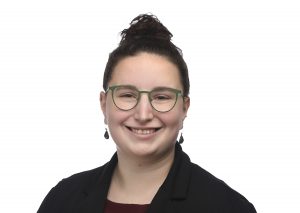 Hello! I am a Geography and Environment Systems graduate student from the University of Maryland Baltimore County. Before graduate school, I received my bachelor’s in Environmental Science from Harrisburg University of Science and Technology and joined the workforce after graduation. With extensive experience in GIS as a geoenvironmental technician, I am interested in forest restoration monitoring and overall landscape management decision support, which will be the main theme of my thesis research. I am a SIP Fellow working at Sleeping Bear Dunes National Lakeshore, where I am working on GIS modeling to support the management of invasive species. I am looking forward to meeting some amazing environmental professionals and growing my skillsets in GIS and invasive species. I enjoy hiking and playing disc golf in my free time, but a game with family and friends is always a great time!
Hello! I am a Geography and Environment Systems graduate student from the University of Maryland Baltimore County. Before graduate school, I received my bachelor’s in Environmental Science from Harrisburg University of Science and Technology and joined the workforce after graduation. With extensive experience in GIS as a geoenvironmental technician, I am interested in forest restoration monitoring and overall landscape management decision support, which will be the main theme of my thesis research. I am a SIP Fellow working at Sleeping Bear Dunes National Lakeshore, where I am working on GIS modeling to support the management of invasive species. I am looking forward to meeting some amazing environmental professionals and growing my skillsets in GIS and invasive species. I enjoy hiking and playing disc golf in my free time, but a game with family and friends is always a great time!
Motusaga Vaeoso
War in the Pacific National Historic Park
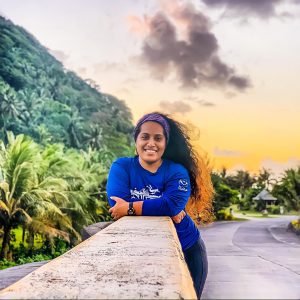 Talofa lava, I am a graduate student at the University of Guam pursuing my Master’s Degree in Biology with an emphasis in marine biology. After receiving a B.Sc. in Biology from the Chaminade University of Honolulu, I decided to work for the American Samoa Government with the Department of Marine and Wildlife Resources and Coral Reef Advisory Group for seven years. I served my community in various capacities, including conducting annual coral reef monitoring surveys, managing related research projects, coordinating education and outreach opportunities for diverse audiences, and facilitating climate resiliency planning with local communities. This summer, I will be with the War in the Pacific National Historical Park located in Guam, conducting assessment surveys and research on coral reef health utilizing various methods. The aim of collecting this data is to improve understanding of coral disease and health issues to inform future coral reef monitoring and management. My passion and respect for the marine world stem from growing up on a tiny island in the south pacific, American Samoa, and it deepened when I discovered underwater photography.
Talofa lava, I am a graduate student at the University of Guam pursuing my Master’s Degree in Biology with an emphasis in marine biology. After receiving a B.Sc. in Biology from the Chaminade University of Honolulu, I decided to work for the American Samoa Government with the Department of Marine and Wildlife Resources and Coral Reef Advisory Group for seven years. I served my community in various capacities, including conducting annual coral reef monitoring surveys, managing related research projects, coordinating education and outreach opportunities for diverse audiences, and facilitating climate resiliency planning with local communities. This summer, I will be with the War in the Pacific National Historical Park located in Guam, conducting assessment surveys and research on coral reef health utilizing various methods. The aim of collecting this data is to improve understanding of coral disease and health issues to inform future coral reef monitoring and management. My passion and respect for the marine world stem from growing up on a tiny island in the south pacific, American Samoa, and it deepened when I discovered underwater photography.
Nicole Stevens
Christiansted National Historical Site
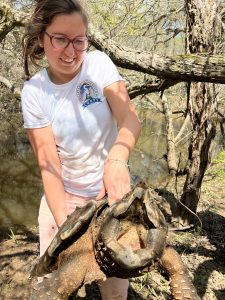 I have always been called to nature, especially to all the diverse critters that run, swim, crawl, and hop across our planet. I completed my undergraduate degrees in biology and earth science from Johns Hopkins University where I studied fish communities in Panama, geological formations and fossils from Nevada, primate dentition from museum collections, and performed dietary analysis using stable isotopes of the Turks and Caicos Rock Iguana. I continue to work on Caribbean lizards through my PhD program in Ecology and Evolutionary Biology at Texas A&M University and through this summer as an SIP Fellow. I focus on conservation and repatriation efforts of the St. Croix ground lizard, an endemic species that has become highly endangered due to human introduction of mongoose. I am incredibly passionate about wildlife, and I am excited to get more experience with hands-on conservation work and outreach projects this summer. In my free time, I enjoy hiking, herping (looking for reptiles and amphibians), and playing with my guinea pigs. I look forward to SCUBA diving and exploring the beaches around St. Croix!
I have always been called to nature, especially to all the diverse critters that run, swim, crawl, and hop across our planet. I completed my undergraduate degrees in biology and earth science from Johns Hopkins University where I studied fish communities in Panama, geological formations and fossils from Nevada, primate dentition from museum collections, and performed dietary analysis using stable isotopes of the Turks and Caicos Rock Iguana. I continue to work on Caribbean lizards through my PhD program in Ecology and Evolutionary Biology at Texas A&M University and through this summer as an SIP Fellow. I focus on conservation and repatriation efforts of the St. Croix ground lizard, an endemic species that has become highly endangered due to human introduction of mongoose. I am incredibly passionate about wildlife, and I am excited to get more experience with hands-on conservation work and outreach projects this summer. In my free time, I enjoy hiking, herping (looking for reptiles and amphibians), and playing with my guinea pigs. I look forward to SCUBA diving and exploring the beaches around St. Croix!
Rowan Fay
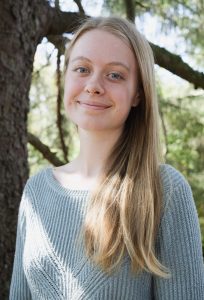 Hello! My name is Rowan Fay, and I am a third-year at Oregon State University. I am double majoring in Ecological Engineering and Sustainability and am originally from Astoria, Oregon. I am currently involved in undergraduate research, working with the OSU Extension of Fisheries and Wildlife to update out-of-print literature on species endemic to the Pacific Northwest.
Hello! My name is Rowan Fay, and I am a third-year at Oregon State University. I am double majoring in Ecological Engineering and Sustainability and am originally from Astoria, Oregon. I am currently involved in undergraduate research, working with the OSU Extension of Fisheries and Wildlife to update out-of-print literature on species endemic to the Pacific Northwest.
I spent this past summer as a volunteer research ecologist with Operation Wallacea on the Yucatan Peninsula of Mexico, specifically in the Calakmul Biosphere Reserve and Akumal Bay. Primarily, I studied the effects of severe flooding and drought periods on water sources within the reserve and their implications on the distribution of large mammals, herpetofauna, bats, birds, and insects throughout the reserve. In Akumal Bay, I studied the effects of tourism on the bay ecosystem. Our research paved the way for new legislation to protect corals, seagrasses, and sea turtles. I am very passionate about conservation and restoration and hope to someday work for the Natural Resources Conservation Service on river and stream restoration projects.
This summer, I will be interning at Shenandoah National Park, examining the effects of climate change, particularly the warming of stream temperatures, on Brook Trout. We will be designing a monitoring program to track the range of Brook Trout throughout the park using such techniques as underwater video monitoring or eDNA. I am looking forward to learning new surveying and data analysis techniques, learning more about the National Parks Service and the Department of the Interior, and exploring the Eastern U.S.!
